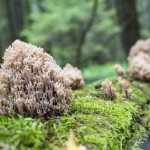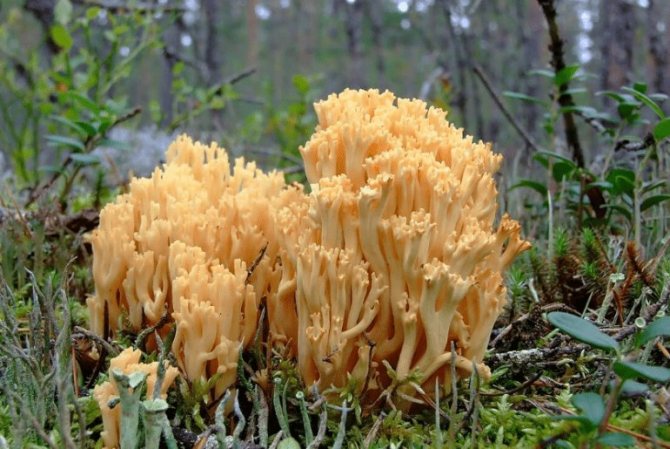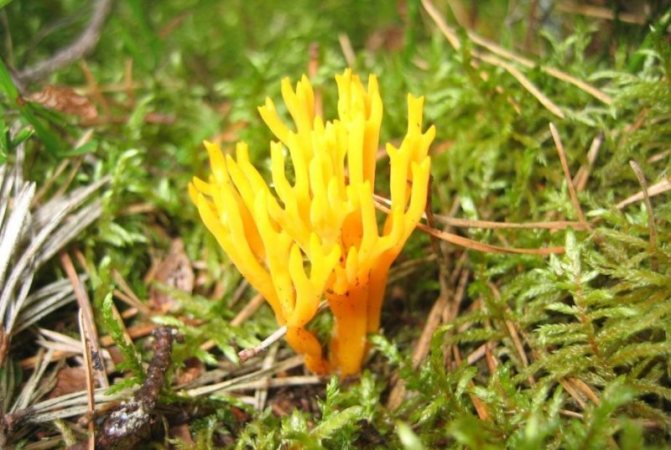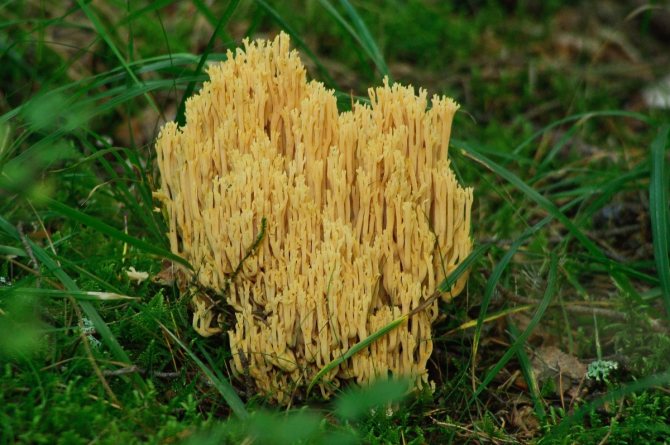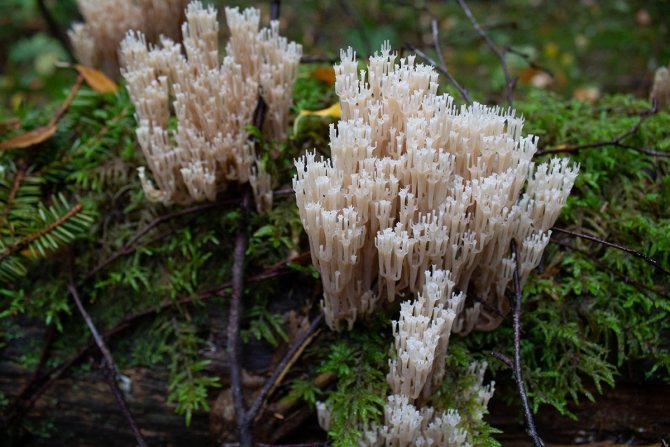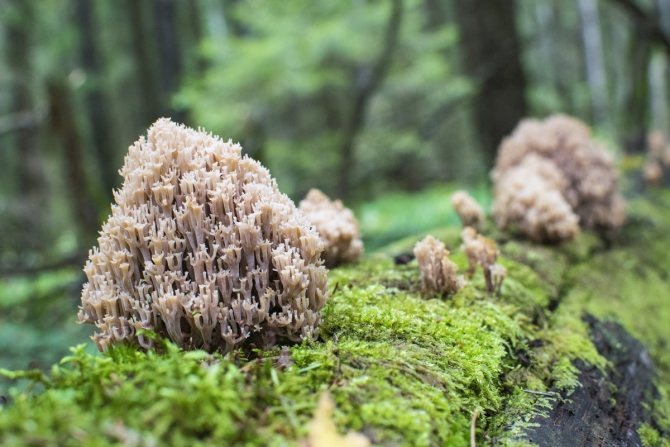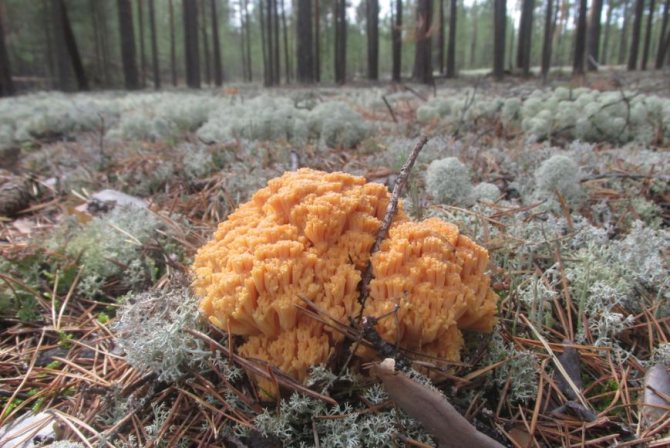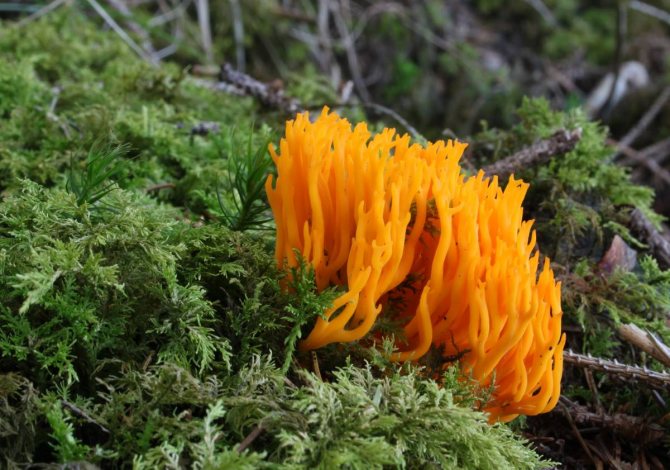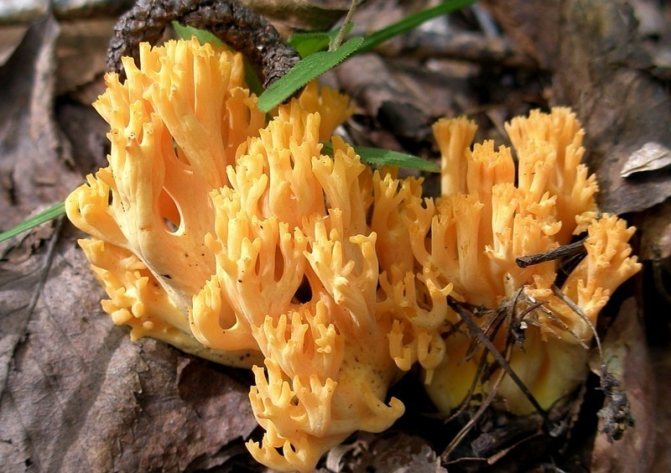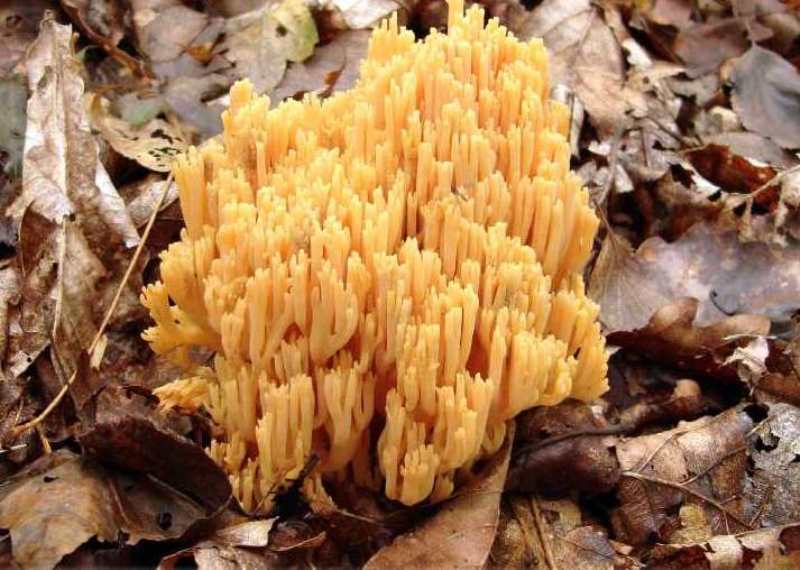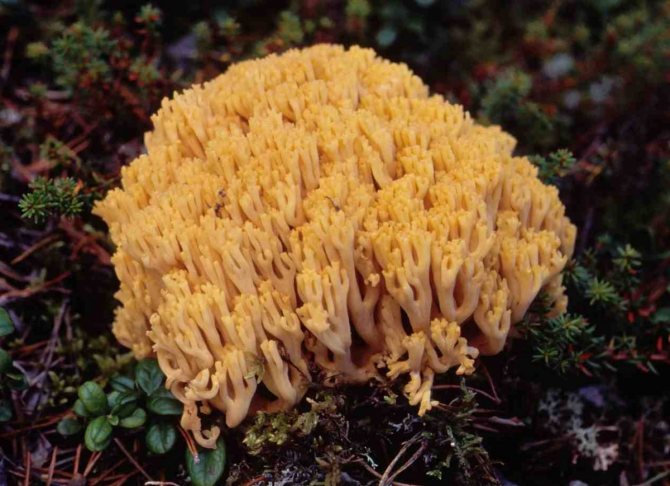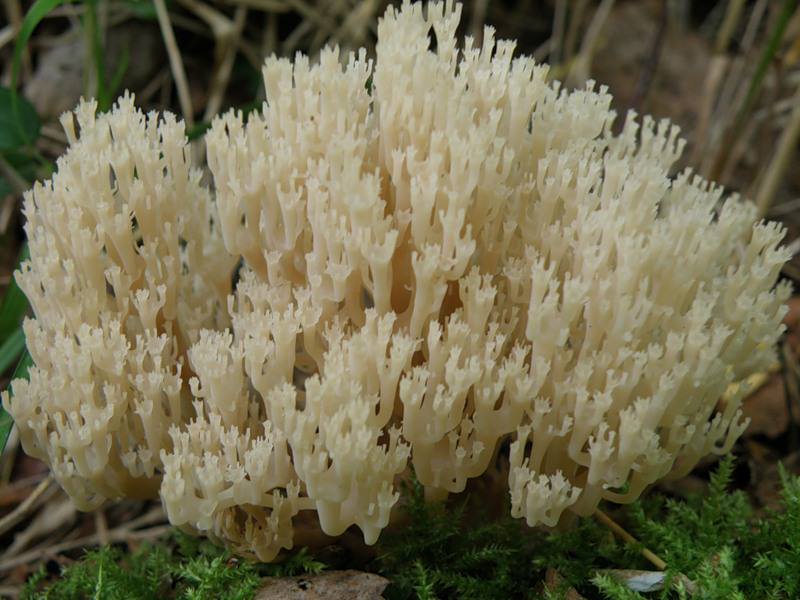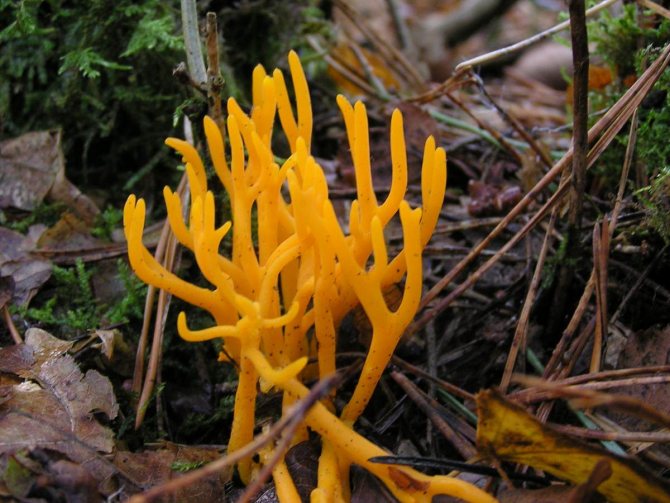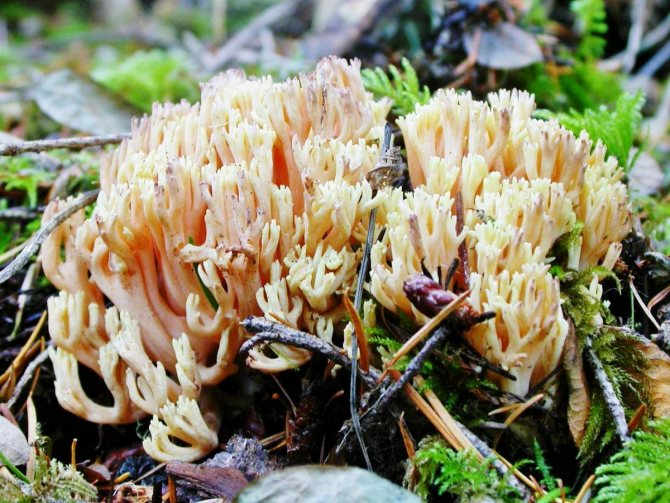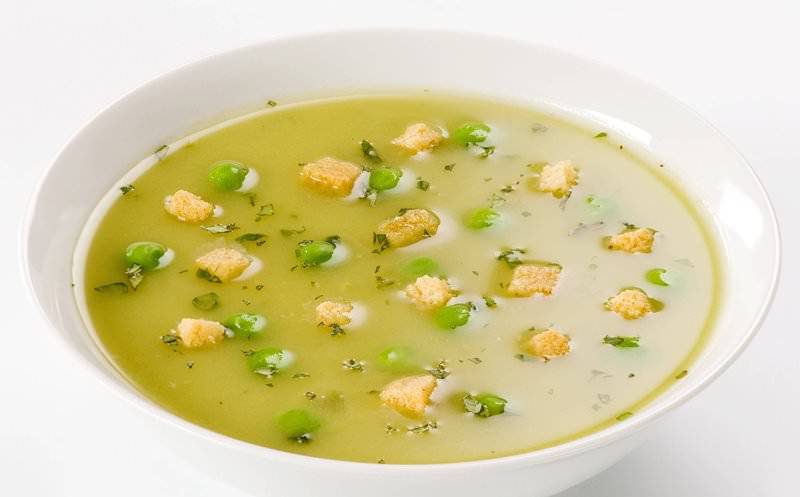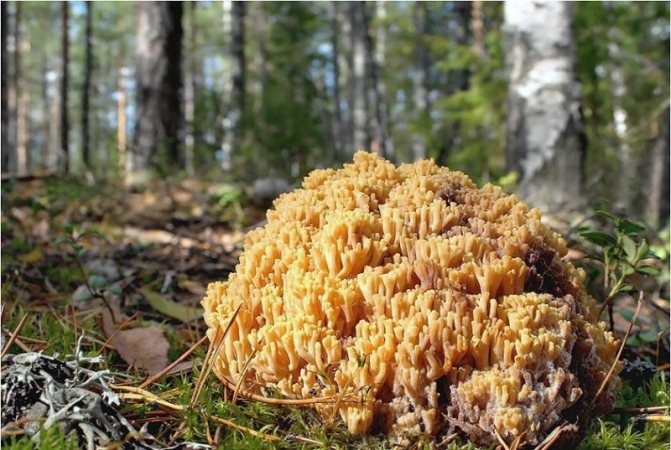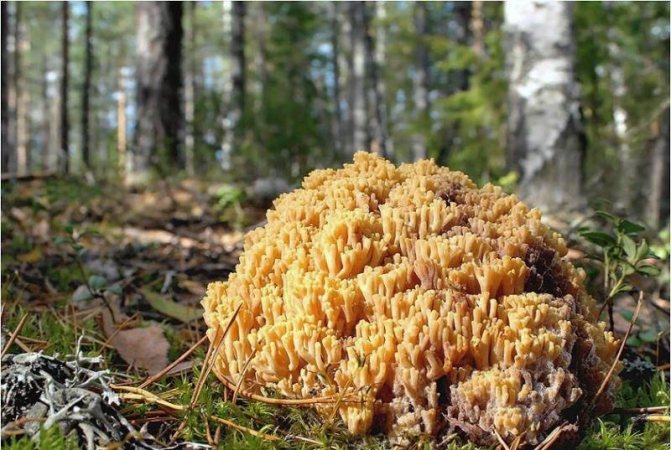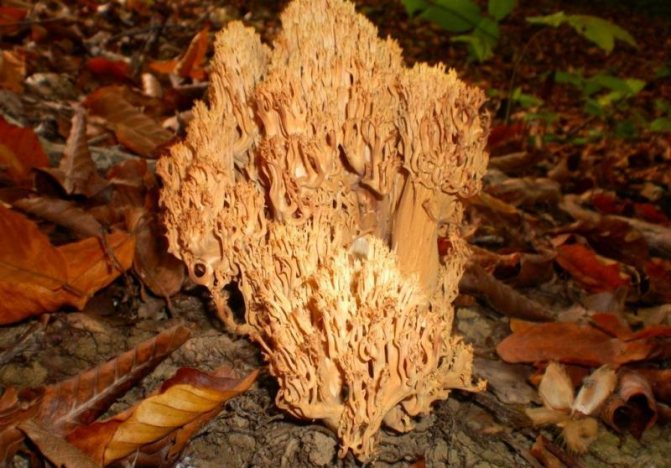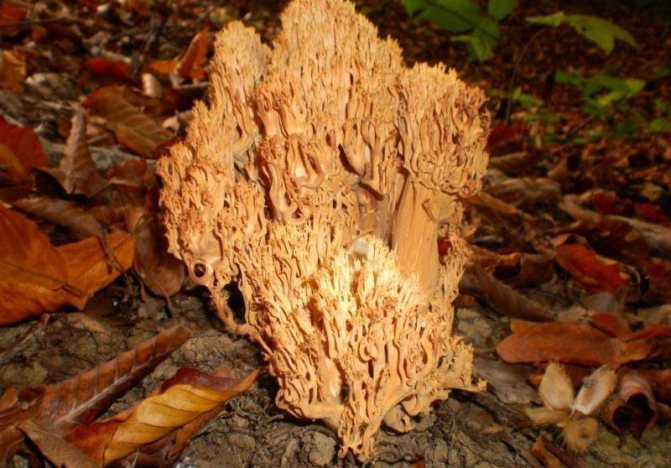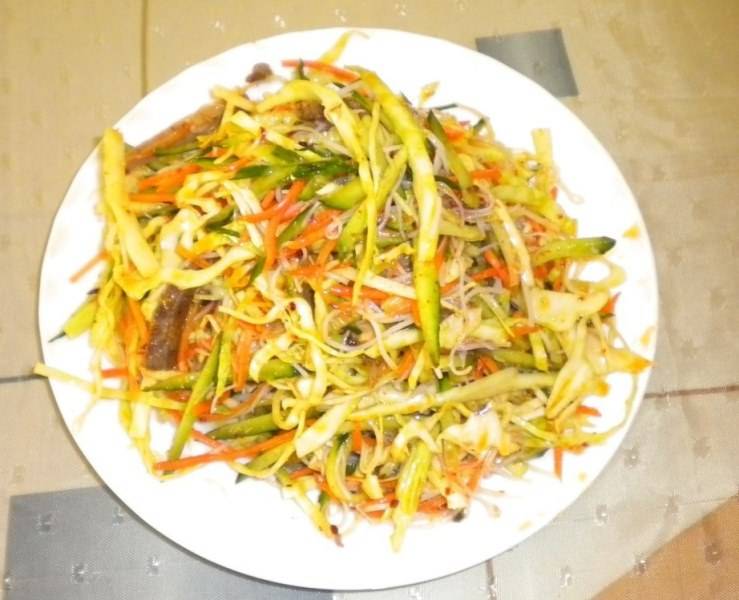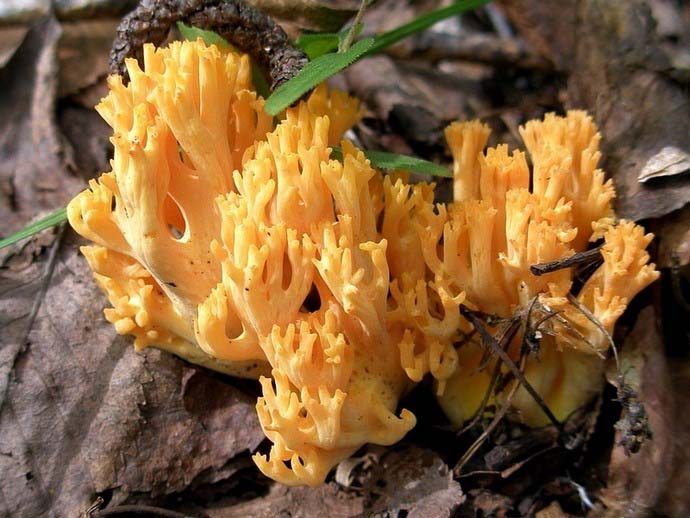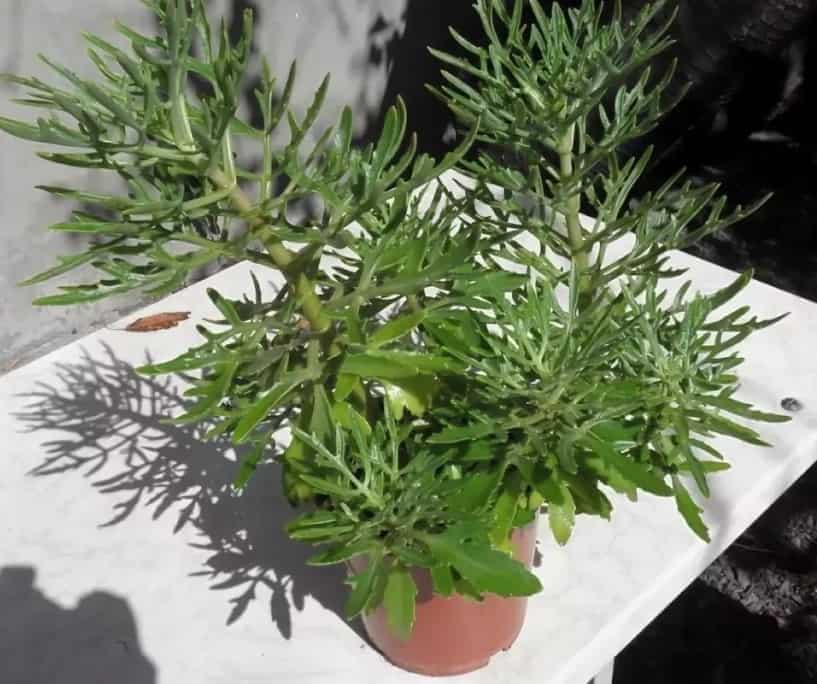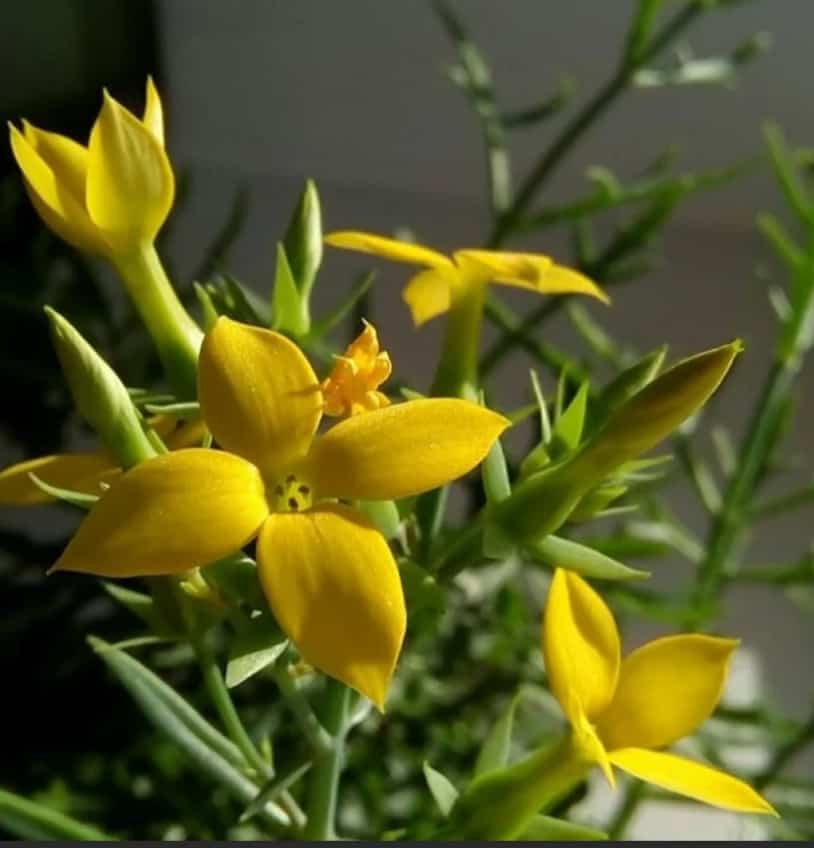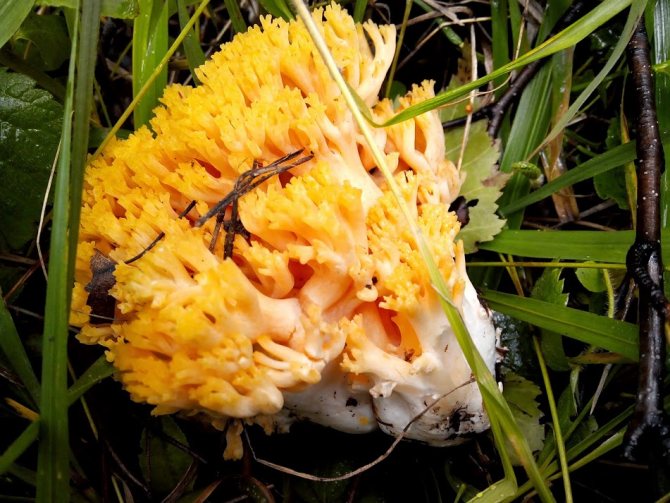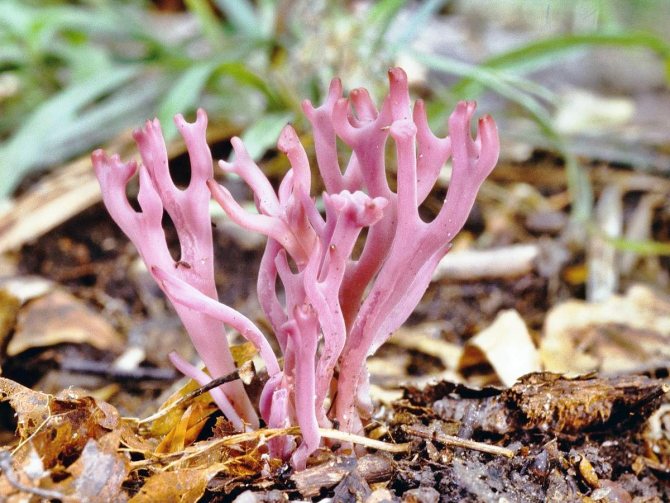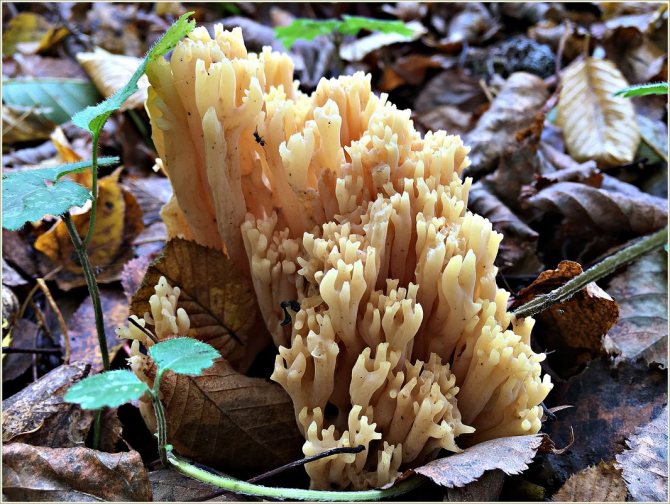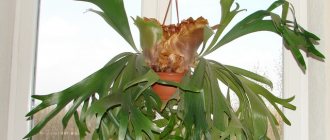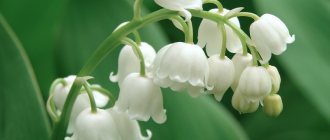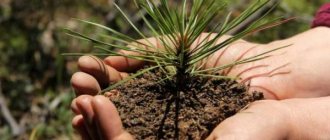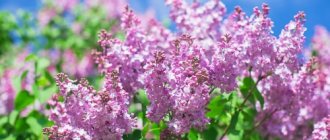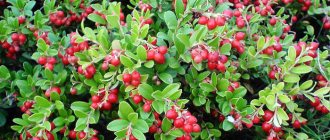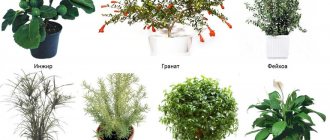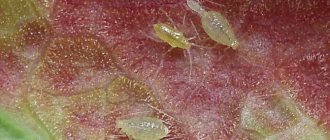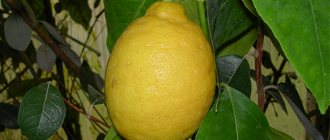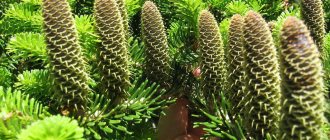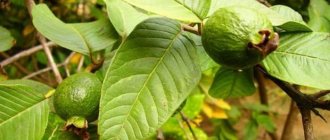Types of these mushrooms, appearance
Antler mushrooms, or yellow ramaria, have an unusual shape, color and look like deer antlers or sea corals.
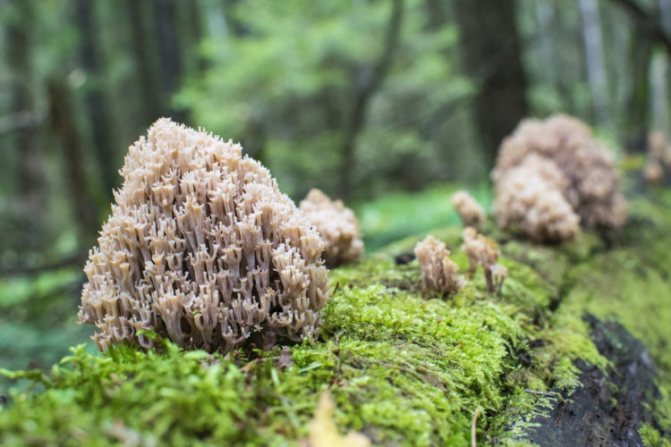
The antler mushroom is edible, its cap has many branches and spikes up to 2 cm long. The average width is 25 cm. This product also has thin and brittle “ears”. Reindeer horns change color depending on the growth phase. The young mushroom is light yellow in color, and eventually becomes bright orange. Another interesting feature is that "deer antlers" do not have a mushroom smell. It is a tree fungus that grows on tree stumps and trunks.
The following subspecies are conventionally distinguished:
- Clay beetle is a white mushroom that becomes light pink as it grows. The height of the mushroom is about 17-20 cm, the diameter is up to 15 cm.
- The bunch is coral. Its body is covered with thin, thick white branches. The young mushroom has tender flesh, while the old one has tough flesh.
- Horned purple. A small representative, which has practically no taste and smell.
- Horned golden yellow. Light yellow mushroom with thick branches.
- Horned crested horn. Reaches a height of 5 cm, has comb-like branches with sharp tips.
Description of mushroom antlers
The correct botanical name is Ramaria flava. From Latin it translates as yellow Ramaria. Belongs to the department Basidiomycetes, class Agaricomycetes, order Gomfovy, Hornatiaceae family.
The habitat of this fungus is mixed, deciduous and coniferous forests of the Caucasus, the North-West of our country, as well as forests of Central Europe.
The people call deer antlers so because in shape it really resembles the branched antlers of a male deer. To many, it resembles corals.
Sometimes in the guides of the mushroom picker you can find the following names:
- yellow horned bird;
- bear paw (how it really resembles a bear's paw is not very clear, but there is also such a name);
- yellow coral;
- mushroom noodles;
- mushroom mace.
The aerial part of the ramaria grows about 15-20 cm in height. The fruit body grows diametrically and reaches 20 cm in diameter. In the middle there is a dense hyphae plexus, which forms a common leg, and branched outgrowths "horns" emerge from it. These "branches" have a cylindrical shape and dichotomously branch at their apex.
The color of the aboveground part of the fruiting body is yellow, and the palette of yellow can have different shades. This depends on the substrate the ramaria is growing on, as well as the intensity of sunlight in the undergrowth.
Closer to the bases of the horns, the color can be rich yellow. If you press on the fruiting body, then a brownish color appears at the point of squeezing. On the cut, the flesh is marbled yellow. The smell is quite pleasant, reminiscent of the smell of freshly cut grass.
Ramaria has a low food grade. On the botanical scale of food categories - the fourth. There is no particular mushroom flavor. If the fruit bodies are old, the tops must be removed, as they accumulate substances that give a certain bitterness.
Application
Mushrooms are actively used in folk medicine. They are used to prepare remedies that help in the fight against joint diseases, as well as to cleanse the body of worms and other similar parasites.Also "deer horns" are applied to cosmetology and cooking.
In cooking
Edible horns are suitable for preparing a variety of dishes. You can marinate them for the winter, dry them, cook soups, make caviar and delicious sauces. And "elk" or "deer horns" are also suitable as filling for baking. They taste like boiled chicken or seafood.
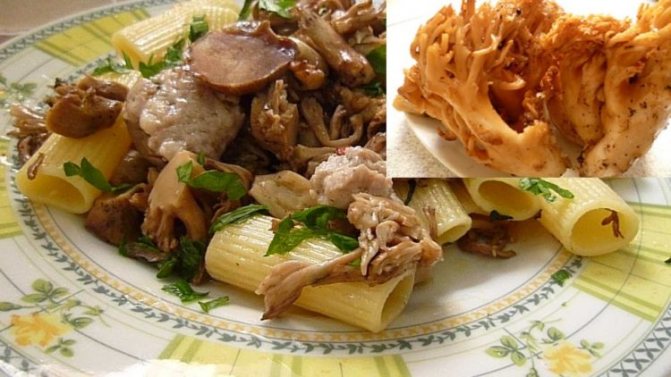

Here is a recipe and a description of how to make a delicious mushroom salad.
Ingredients
- boiled mushrooms - 300 g;
- carrots - 300 g;
- onion - 1 head;
- table vinegar - 3-4 tbsp. l .;
- vegetable oil - 2 tbsp. l .;
- chives - 4 cloves;
- salt, pepper, herbs - to taste.
Preparation
- Finely chop the boiled "deer horns" (300 g), carrots (300 g), garlic (4 cloves) and transfer to a convenient dish.
- Add chopped herbs, salt and pepper to taste.
- Season with vegetable oil (2 tablespoons), stir and leave to brew for 30 minutes.
- Now you need to pickle the onions. Cut a medium-sized head into thin rings, pour vinegar (3-4 tablespoons) and leave for 2-3 minutes.
- Transfer it to the rest of the ingredients and mix everything.
In medicine
The mushroom is used to prepare various tinctures. For example, the following remedy is used to combat stomach ulcers.
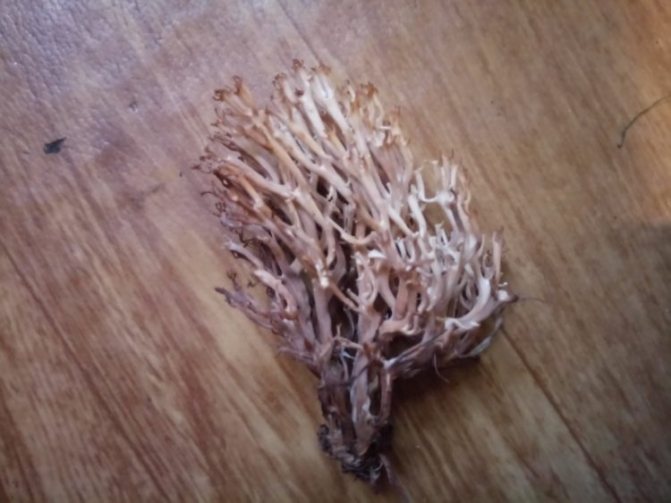

Rinse fresh mushrooms (150 g) thoroughly, dry and refrigerate for 2 days. Then finely chop, add alcohol or vodka (500 ml) and leave for 30 days in a dark place. Strain and start treatment: 1 tbsp. l. tinctures, 3 times a day, before meals. Treatment lasts 1 month, then a break, and you can repeat the course again.
The medicine is also used for cancer of the larynx, stomach, throat and esophagus. For the treatment of inflammatory processes in the liver and pancreas, it is recommended to prepare the tincture with wine. You will need 1 liter of Cahors and 150 g of "deer horns". The ingredients should be mixed, insisted in a dark place for 30 days. Take the finished product should be 2 tbsp. l., 1 time per day, before meals. Treatment is 2 weeks.
How to cook mushrooms properly
Soup made from "reindeer horns" turns out to be especially tasty. To prepare it, you will need the standard ingredients of mushroom soup - a clove of garlic, onions, herbs, carrots, potatoes, butter, salt, pepper and 300-400 g of this wonderful mushroom.
Boil the mushrooms separately in salted water for 20 minutes. We must drain this broth and do not use it. It may contain toxins. You can boil it twice for 10 minutes. It will even be better that way.
Then the soup is cooked in the standard way. Throw onions, potatoes, garlic, carrots into cold water, bring to a boil, add mushrooms. Cook for 10 minutes over low heat and add salt, pepper and herbs. It turns out a very tasty light mushroom soup. Children will especially like it, as the mushrooms in the soup are unusual.
Ramaria can be salted, fried with potatoes, added to salads. The main condition for cooking is that you always need to boil the mushrooms over low heat for 10-15 minutes in salted water. This helps to flush out toxins. This is especially important, because there are many moderately poisonous species among horned beetles. Primary heat treatment allows you to destroy and reduce the concentration of toxic substances to a minimum.
Young antlers can be dried. Overripe fruit bodies can rot when dry, while young ones dry out easily. To do this, they need to be divided into the maximum possible number of "branches" with a part of the leg. A thread is passed through the leg. Further, mushroom garlands are hung out in the shade in a dry and ventilated room.
When preparing dishes from dried ramaria, it must be soaked in water for 12 hours, and then rinsed thoroughly and boiled for 10 minutes.
Collect deer horns, cook culinary masterpieces from them, but be careful and careful!
In the forest during the mushroom season, you can find a very diverse vegetation. On stumps, dead wood, you can see something similar to corals. These mushrooms are called "deer horns". These mushrooms also have another name, "Coraloid Hericium" because of their appearance.
These mushrooms are edible, but it is better to leave them in place. All the same, they are one of the species listed in the Red Book, because there are so many other edible mushrooms.
Reindeer horns are completely edible mushrooms. But there are a lot of them. They are collected mainly on fallen old tree trunks, since antlers, or hornfels, are very active parasites and their mycelium wanders very quickly.
It is preferable to collect hornfels in a deciduous forest, because in a coniferous forest they are bitter and little / edible. The bitterness of coniferous hornfels is not washed out by anything, but continues to exist in the marinade and brine.
The most delicious hornfelses I came across in oak forests. Although in aspen and birch forests, they are also nothing. Hornfelses are fried, boiled, pickled, salted. I mean, all operations are the same as with ordinary mushrooms.
I personally did not come across poisonous ones. Although I know for sure that the deer horns that grow in the coniferous strip are actively used as an anthelmintic. Worms, as you know, do not like poisons.
The forests of Russia are full of bizarre macromycetes. Due to its unusual appearance - similar to the antlers of a deer - the mushroom of the department of higher fungi of Basidiomycetes got its name deer antlers. There are several more names for this fruit - horned, coral-shaped hedgehog, coral, etc.
Having met a slingshot in the forest, not every mushroom picker dares to cut it. This is due to its rather exotic appearance. This species is considered edible, and therefore, before being included in the Red Book, it could be collected and prepared in a variety of ways.
How to distinguish edible from inedible
There are similar inedible and poisonous types of mushrooms. The so-called "false horns", which are quite difficult to distinguish for a non-professional. Therefore, you should be careful during the collection.
It is advisable to eat only young yellow mushrooms and only the base. The smell of the "right" mushroom is similar to the smell of cut grass.
Also, you should not, in principle, pick any mushrooms, be it honey mushrooms, chanterelles or other options, near industrial enterprises and near roads.
When and how to collect correctly?
When collecting, you should be extremely careful, because among the horned ones there are many poisonous twins. Collect and prepare edible corals from August to September inclusive. During this period, they can be found in the undergrowth as single "bushes" or in groups of several horns. And in the southern part of the country they are harvested even in winter.
There are several rules to follow when collecting yellow ramaria:
- Old mushrooms should not be cut because they taste bitter. Only young slingshots are collected.
Cooking methods
The vast forests of our country are teeming with all kinds of mushrooms. Nevertheless, not every lover of a quiet hunt is lucky enough to meet a coral-shaped hedgehog. From the "Deer Horns" you can cook a very large number of very tasty and incredibly healthy dishes.
You can cook in completely different ways. Dried coral-shaped hedgehog can be soaked and then boiled or fried in batter. A very tasty and aromatic mushroom dish is obtained if the fruit bodies of "deer horns" are marinated in a sauce made from oil, balsamic vinegar, sugar, as well as salt and lemon juice.
Botanical description
A full description of Hericium coralloides can be found in the Red Data Book of Russia, where the coral hedgehog is listed as a rare species. "Deer horns" are distinguished by a very beautiful exotic appearance.It is difficult to distinguish the cap and the leg of the coral-like hedgehog, therefore, when characterizing and describing this species, one can speak only of the fruiting body as a whole. The fruit bodies of Hericium coralloides are a bit like coral branches.
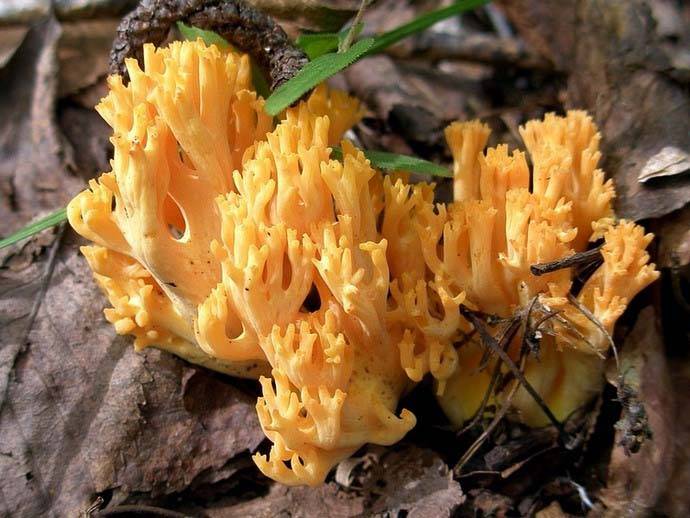

The above-ground part of gericia is very decorative, multi-branched, snow-white in color. Relatively long spines 10-20 mm high, thin and rather brittle, cover the branches of the fungus almost to the very base, most often located on the lateral side. The average diameter of the fruiting body does not exceed 25-30 cm.
The pulp is initially white, but as the fungus grows and develops, it acquires a characteristic yellowish coloration. Elastic in its raw state, it becomes harsh after cooking. There is no pronounced mushroom aroma. Fruiting occurs from June to October.
How to make Kalanchoe bloom
To understand how to care for Kalanchoe at home and achieve flowering at the same time, we turn to botanical reference books. In its homeland (Madagascar Island), Kalanchoe blooms at the end of the African summer, when sunny days are short. Accordingly, this succulent is genetically programmed to form flower buds under short daylight conditions. In our latitudes, its natural flowering occurs in December - May. However, in the store you can buy blooming Kalanchoe in a pot at any other time of the year. How did the growers take care of such a plant that they managed to knock off its biological clock? The secret lies in the artificial reduction of daylight hours to 8-10 hours. The remaining 14-16 hours Kalanchoe are placed in pitch darkness. This regime is maintained for 4 weeks, during which flower buds are laid.
The same can be replicated at home. To do this, at a certain time, cover the Kalanchoe with a box, a tight bag, or put the plant in a dark cabinet. And after 14-16 hours - to expose or remove the shelter. For example, at 5 pm a bag is put on the plant, and at 7 am they are removed. And so for 4 weeks.
In preparation for flowering, the following conditions will be ideal:
After a month of such preparation, a set of buds and during flowering, the need for a short day of light disappears. But it is advisable to provide coolness - so the flowers last longer. Watering can be increased, that is, switch the mode from "lean" to "moderate". And admire the bloom, which can last 3-4 months!
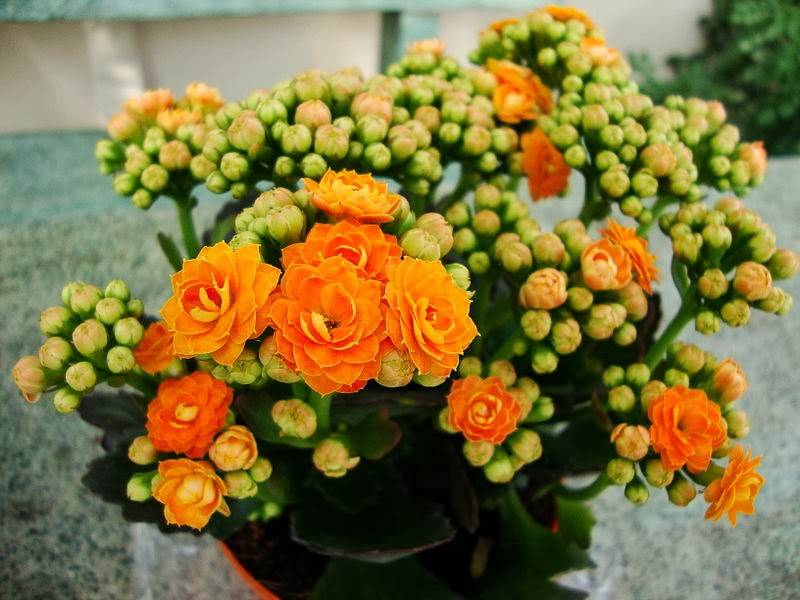

Blooming Kalanchoe is an unforgettable sight!
To encourage the plant to bloom for an extended period, old wilted inflorescences are removed. In their place, new arrows with buds grow.
Answers to common questions
The unusual shape of mushrooms raises a lot of questions from mushroom pickers:
When collecting any mushrooms, some rules should be strictly observed: the crop is cut, not plucked by the root; the soil and moss in the forest should not be stirred up or dug up too much; picking mushrooms in reserves is prohibited; mass collection of any species will certainly lead to its extinction.
The rubbery flesh of a calocera has a reddish tint. The false mushroom has no taste and smell. The fruit body has pointed branches and is colored dark yellow or orange. True yellow corals are very similar to calocera, for which the cartilaginous and gelatinous consistency of the fruit body is not characteristic.
The coral hedgehog is one of the more unusual members of its family. It is famous not only for its interesting shape, but also for its good taste. But when collecting this species, you should be extremely careful, because it can be easily confused with false corals.
The world of mushrooms is truly fascinating and unique.These organisms are unique in themselves and can amaze with their shapes, complex life cycles, and taste.
In the forests, you can sometimes find an unusual mushroom that looks like coral. People call it "deer horns". Let's talk more about these mushrooms.
Poisonous or edible
The fungus of the species Hericium coralloides belongs to the category of edible mushrooms. Fruit bodies have such an unusual appearance that there are no inedible and poisonous counterparts in hericia. In terms of nutritional and chemical composition, as well as pharmacological value, Hericium coralloides has a high similarity with the relatively common Hericium comb.
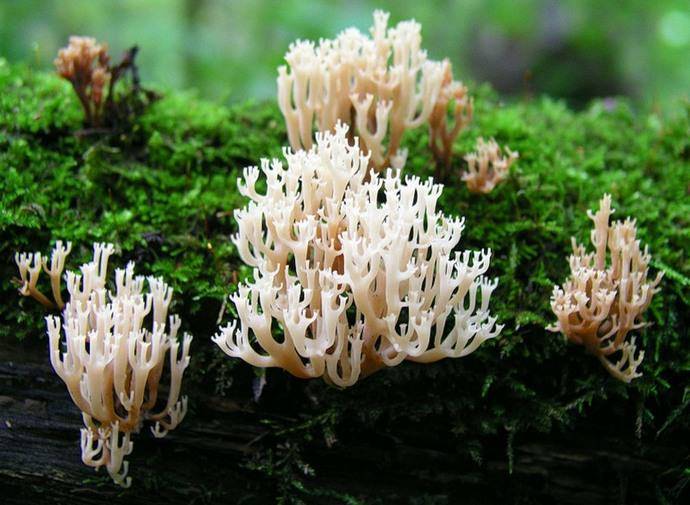

100 g of raw pulp contains:
- potassium - 254 mg;
- phosphates - 109 mg;
- sodium - 8 mg;
- calcium - 6.7 mg.
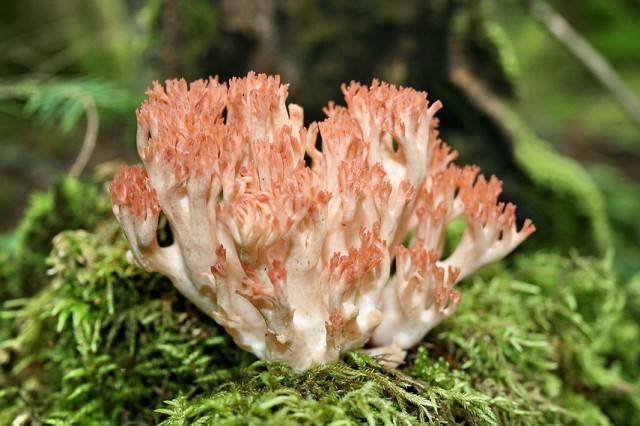

In addition, the composition of the mushroom pulp is enriched with all free amino acids, except for such as methionine and tryptophan, and also includes a significant amount of ketones, lipid substances, phytoagglutinin and sterols.
Hericium coralloides are widely used in traditional Chinese medicine, where they are used in the treatment of gastric and gastrointestinal diseases, as well as to improve the function of the respiratory system. There are pronounced antitumor and immunostimulating effects., as well as antigeriatric effects and hypoglycemic activity of mushroom pulp.


Diseases and pests
The most common problems
These diseases are usually caused by improper flower maintenance.
- Kalanchoe Laciniata can get sick if it doesn't get enough light. Symptoms: Leaves turn pale, turn yellowish and fall off.
- If the leaves begin to wrinkle and fall off, there is little moisture and the temperature in the room is too high. It is required to normalize the temperature and humidity of the air.
- If the long-awaited flowering does not come, then the Kalanchoe is oversaturated with organic fertilizers, you should stop feeding for a while.
- After flowering Kalanchoe Laciniata can slow down in growth, begin to become bare, this is a sign of lack of nutrition. You can fertilize or renew, transplant a flower.
- Avoid stagnant humidity in the room and substrate. This usually leads to the appearance of gray mold. Signs: Leaves are covered with brown and then black spots.
Dangerous pests
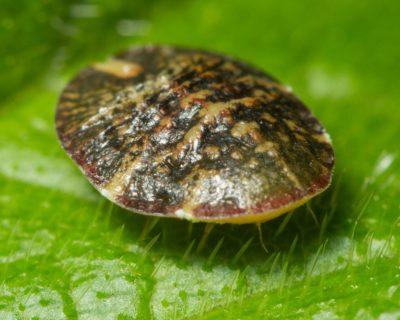

For Kalanchoe, Laciniata is very dangerous scabbard - small pests - insects. A sticky gray coating appears on the leaves. A fungus appears, flowering stops. It is necessary to treat the leaves with an alcohol solution, carefully remove insects. Repeat the procedure.
Location
On the territory of our country, deer horns are most often found in the Far East, in Western and Eastern Siberia, the foothills of the Caucasus, as well as in Karelia. They can be found in both deciduous and coniferous forests, especially pine. They grow on rotten stumps, trees, less often on soil covered with various types of moss. But it is believed that the most delicious are specimens found in humid, shaded places in oak, aspen and birch groves.
Although deer horns are considered rare mushrooms, and even listed in the Red Book, sometimes you can find places where they grow in large groups in a row or in a ring. They are usually collected from mid-summer to early winter, depending on the region of growth. In places with very warm climates, they are found even in winter.Interestingly, this type of fungus is not damaged by worms.
Primary processing and preparation
Horny yellow belongs to conditionally edible mushrooms, has 4 flavoring category. Since a bitter taste develops in the yellow horned horn with age, only young fruiting bodies should be collected.
To ensure the absence of bitterness, the antlers are pre-boiled for 15-20 minutes, draining the broth, or the ends of the twigs are removed. Forest "corals" processed in this way can be cooked like other edible mushrooms - cook until cooked, fried and stewed. Some lovers of exotic mushroom pickles and salt them.
Abundantly branching "bushes" of conditionally edible deer horns attract attention with their extraordinary appearance. When properly picked and cooked, young mushrooms taste like lean varieties of meat.
Precautions
You should be aware that there are a fairly large number of mushrooms that resemble deer horns in appearance. Many of them are inedible or even poisonous. Therefore, beginners need to start collecting them under the guidance of experienced mushroom pickers.
Also they should be well washed and processed, especially those that are harvested for future use, because even edible mushrooms, if improperly prepared and stored, can pose a serious danger. In addition, do not collect them along the roads and in other polluted places, where they accumulate a large amount of toxic substances.
Horned yellow
Horns, of course, are difficult to mistake for mushrooms in the usual sense. Their fruiting bodies are club-shaped or nearly cylindrical, erect or branched with simple or re-branched branches, sometimes coral-shaped. The consistency is fleshy, leathery, less often slightly gristly. Coloring is specific to each species.
In our country, these mushrooms are little known, but Bulgarians, Czechs, Germans and Poles cook delicious aromatic dishes, soups and spices from them. The most common species of forest horned mushrooms are yellow, amethyst and reed.
Diseases and pests
All problems of indoor succulents are associated with their improper maintenance and inappropriate care. And the florist should monitor the state of the Kalanchoe and respond in a timely manner to negative changes:
- Lack of light - leads to pallor of foliage, its yellowing and dropping. It is important to take care of the abundant lighting of the flower.
- Lack of water against the background of high air temperature - in this case, the foliage also suffers, it shrivels and falls off. These indicators need to be normalized.
- Lack of flowering - perhaps the flower is receiving too much organic matter. We need to provide him with a temporary "hunger strike".
- Slower growth and loss of foliage after flowering - the succulent, most likely, has spent all its strength and needs additional feeding. And also it can be cut, removing dried stems and leaves, and planted in fresh soil.
Infection of the stem with gray mold is the result of waterlogging of the air and soil. It appears in the form of brown, and after black spots on the foliage. Treat succulent with antifungal drugs.
Another fungal disease that can develop in Kalanchoe deer horns is leaf spot. Signs of the disease: tiny yellow specks on the leaf blades, which turn brown over time. The affected leaves fall off. Fight fungus with fungicides.
Among the dangerous pests of Kalanchoe laciniata, one can note the scale insect, which is very resistant to insecticides and can seriously harm the plant. The affected flower should be isolated from other vegetation, treated with a solution of laundry soap, removing insects. After that, another 3-4 procedures will be required at weekly intervals. And in case of severe infection, insecticidal preparations are used.
Mealybugs can also overcome the plant, they are removed with soap or alcohol solution, and then with insecticides.Additionally, it is recommended to spray the foliage of the plant with mineral oil.
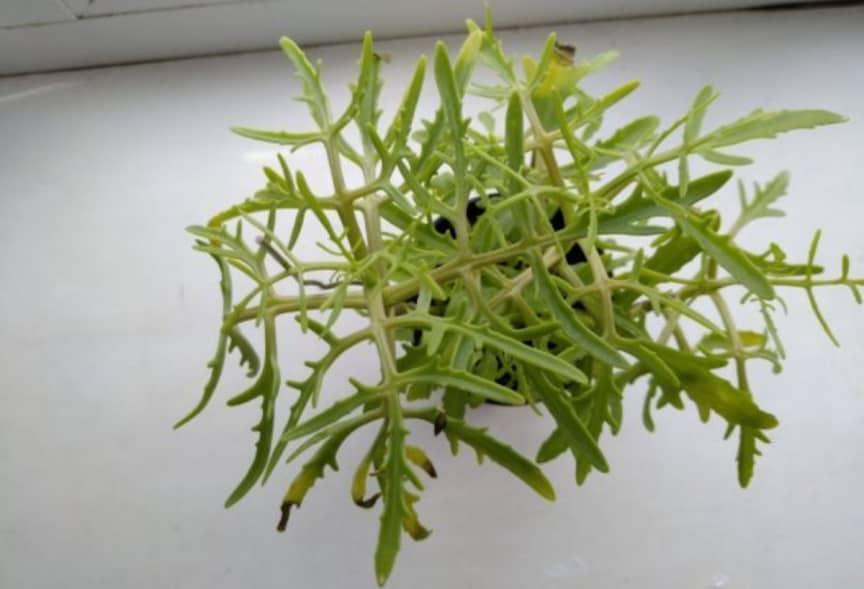

Soil requirements
The substrate is best purchased from a store., marked - for succulents or cacti.
For the first option, you will need:
- sod land - 1 part;
- sheet land - 1 part;
- coarse river sand - 1 part;
- vermiculite -1/4 part.
You can also use:
- universal soil - 2 parts;
- coconut substrate -1 part;
- vermiculite - 1 part;
- humus - 1 part.
Another option for the substrate:
- light loam -1 part;
- coconut substrate -1 part;
- zeolite cat litter - 1 part.
Contraindications
This mushroom, like other types, has certain contraindications. These include:
- children under 12 years of age;
- pregnancy and lactation period;
- chronic gastrointestinal diseases;
- individual intolerance (allergy).
You should be careful when collecting, because it has inedible counterparts.
Before cooking, they should be thoroughly rinsed under running water. You should not pick these mushrooms near highways and large industrial enterprises.
The quality of the soil mixture
You can plant laciniata in a ready-made substrate for cacti and succulent plants. It is moderately nutritious, light, water and air permeable.
But, many flower growers prefer to prepare mixtures on their own:
Recipe number 1
The following ingredients are mixed in certain proportions:
- 1 piece of turf;
- 1 piece of leafy land;
- 1 part of coarse river sand;
- A quarter of vermiculite.
Recipe number 2
In this case, one part of the following components is added to 2 parts of the universal substrate:
Recipe number 3
Another recipe that includes not quite standard materials that need to be taken in equal volumes:
- Light loam.
- Coconut substrate.
- Zeolite cat litter.
It is recommended to add a small amount of pieces of birch charcoal and humus to any composition. At the bottom of the pot, be sure to place a thick layer of drainage material: medium expanded clay, gravel, small pebbles, pieces of foam plastic, clay or ceramic shards. Drainage eliminates moisture stagnation at the rhizome and reduces the risk of rotting.
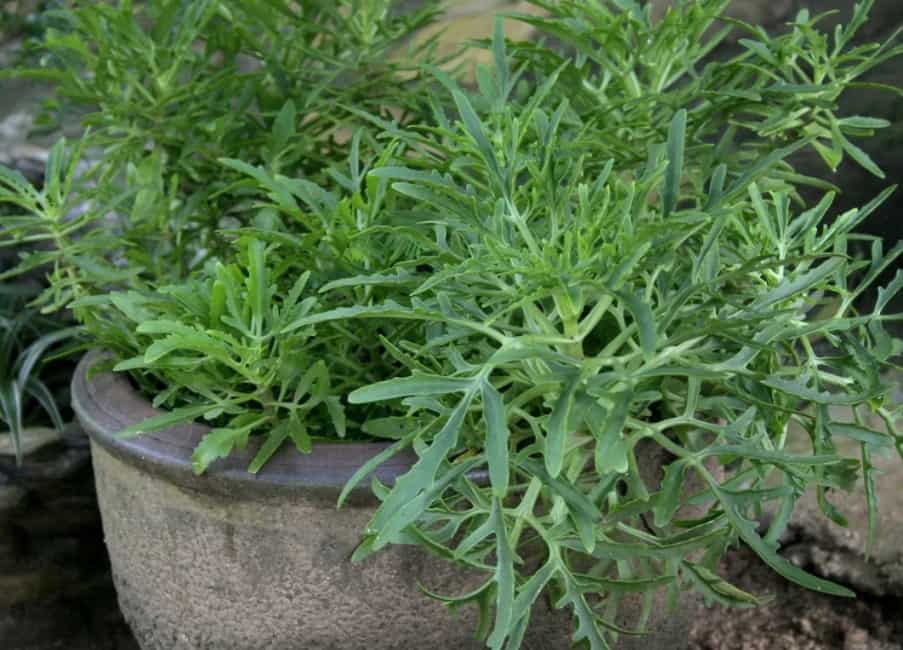

Flavor: mushroom sauce for all occasions
So, suppose you brought reindeer horn mushrooms from the forest. Lunch preparation will begin with preparing them. The collected "corals" (a third of a kilo) are washed several times, certainly under running water, because due to the winding structure, dirt and debris are reluctant to leave them. After that, they are boiled for half an hour in a not too large saucepan.
The broth is poured out, because, despite all the efforts, it still contains a certain amount of dirt. The mushrooms are washed again, filled with clean water, and the cooking is repeated, but for only a third of an hour. We repeat all the manipulations, and, finally, the “deer horns” mushroom is, in the first approximation, ready for further processing.
Sticks of two potatoes are lowered into cold water, followed by circles of half a large carrot. Lavrushka leaf - and into the fire. When the vegetables are half-cooked, mushrooms are added to them and a small piece of butter is added. After about ten minutes, a chopped onion and a couple of garlic slices are added.
Sauces, sauces and ketchups can turn even the most miserable dish into a masterpiece. If you like offal, boiled meat, and prefer to supplement eggs with pleasant substances, you should like the sauce based on the reindeer horn mushroom. 200 grams of slingshots are boiled according to the rules already described.
The same amount of flour is fried in three tablespoons of melted butter until golden brown. Further, with vigorous stirring, milk is poured (one and a half glasses).After getting a rather thick, but homogeneous mass, another half a glass of milk is added, in which two yolks and a glass of broth (I would like a mushroom broth, but you can take meat broth), plus spices with salt are loosened.
Then, perhaps, you brought the mushrooms "deer ryzhki" from the forest. Prepare for a meal from the preparatory process. The selection of "corals" (the third of a keel) is washed out a few times, sometimes under running water, fragments through the sound of the structure of the pond, and it is reluctant to go through them. The stench of pvgodini is cooked in not the great casserole.
Vilivayetsya, oskilki, unaffected by all zusilla, all the same to take revenge in his singing number of brutes. The mushrooms are washed out again, filled with clean water, and the variance is repeated, even for the whole third of the year. Repeat all manipulations, and nareshti, mushroom "deer ryzhka" in the first close to ready to the next processing.
The cold water sinks two cartoplin sticks, then go to the gurts of half a great carrot. A leaf of lavrushka - i on the fire. If the vegetables are half boiled, mushrooms are boiled up to them and a small piece of butter is put in. Chilin after ten is added to chop the cibulin and a couple of garlic slices.
Pidlivi, sauces and ketchup can be transformed into a masterpiece by navit into the edge of a wretched dish. As long as you love offal, boiled meat, and eggs, you can add additional ingredients, you are guilty of gravy, the basis for which is the mushroom "deer ryzhki". Gram 200 slingshot can be used according to the same rules.
With three tablespoons of melted butter, grease the styli and are boros until golden brown. Dal, with intensive thinking, pour in milk (drink bottles). If you want to take away the thick, ale of one-sided mass, add another glass of milk, in which two chews and a bottle of broth (although it is used - mushroom, or you can take it and meat), plus specials from the seed.
So, suppose you brought reindeer horn mushrooms from the forest. Lunch preparation will begin with preparing them. The collected "corals" (a third of a kilo) are washed several times, certainly under running water, because due to the winding structure, dirt and debris are reluctant to leave them. Then they are boiled for half an hour in a not too large saucepan.
The broth is poured out, because, despite all the efforts, it still contains a certain amount of dirt. The mushrooms are washed again, filled with clean water, and the cooking is repeated, but for only a third of an hour. We repeat all the manipulations, and, finally, the “deer horns” mushroom is, in the first approximation, ready for further processing.
Sticks of two potatoes are lowered into cold water, followed by circles of half a large carrot. Lavrushka leaf - and into the fire. When the vegetables are half-cooked, mushrooms are added to them and a small piece of butter is added. After about ten minutes, a chopped onion and a couple of garlic slices are added.
Trimming and shaping
All Kalanchoe tend to stretch and grow over time. Of course, for some time after the purchase, the Kalanchoe looks like a miniature squat bush (and even then, if you take proper care of it), but gradually, at home, the decorativeness of the plant decreases. The stems are pulled out, the leaves are shrinking.
To prevent this from happening, the Kalanchoe needs to be shaped by trimming and pinching.
Kalanchoe pruning is performed immediately after flowering. Withered peduncles are cut off and the stems are shortened. In place of the cuts, new shoots will appear, which can also be pinched for further branching.
Usually pruning and shaping of Kalanchoe is performed in spring / summer. Then, by the fall, many young shoots are growing on the plant, ready to give flower stalks. If you plan to stimulate the plant to bloom at another time (this is possible by artificially reducing daylight hours, it is written about this later - scroll down the page), then pruning should be stopped a couple of months before the start of stimulation.
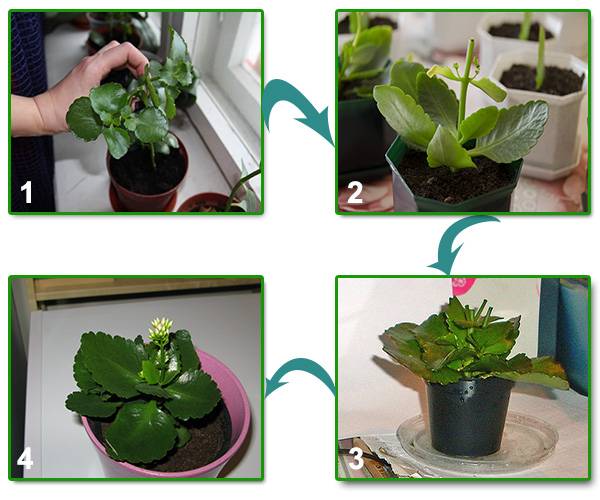

Kalanchoe trimming technology
Reproduction
Kalanchoe can be propagated in several ways:
1. "Children" (only bryophyllum)
They are fully formed plants, only small, but already having leaves and roots. The mother's bryophyllum pours these "babies" anywhere, even in nearby pots with other plants. And the new settlers quickly take root, forming whole families of new young Kalanchoe.
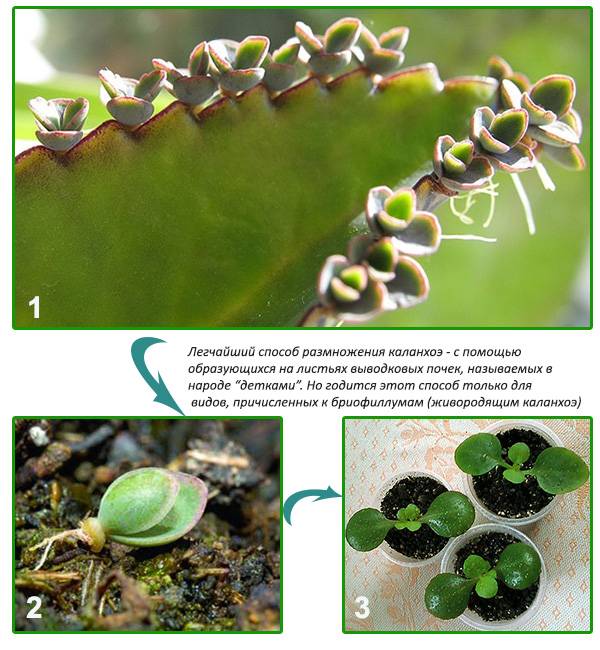

Reproduction of Kalanchoe-bryophyllums by brood buds
2. Apical cuttings
A universal way, suitable for any kind. And it allows you to quickly get an adult flowering plant. The apical stalk is cut from the mother bush, dried for 1-3 days and buried in the ground. They do not cover it with anything, water it a little after the top layer of soil has dried. Or they put the cut stalk in the water. Kalanchoe roots give easily, even in winter.
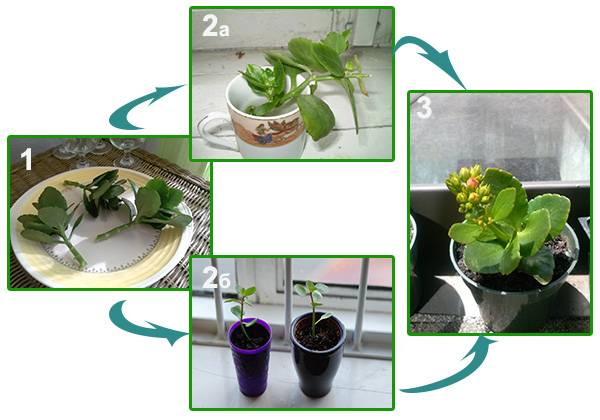

Reproduction of Kalanchoe stem cuttings
3. Leafy cuttings
A universal method similar to the previous one. The leaf is buried in the ground, it gives roots very quickly. After a while (you will have to wait!), An outgrowth begins to grow from the buried leaf - a new full-fledged Kalanchoe. With viviparous Kalanchoe, you can do differently: put the leaf on the ground vertically, then "babies" will quickly appear from the sinuses.
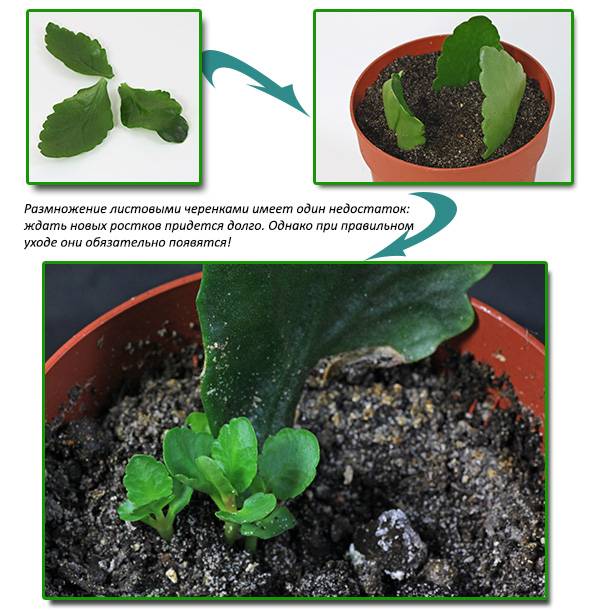

Reproduction of Kalanchoe leaf
4. Seeds
The seeds are laid out on the surface of a moistened soil, covered with glass, and placed in a warm, bright place. Shoots appear in a few days. Seed propagation is the most labor-intensive method of propagation of the Kalanchoe, but it also takes place. Especially if you want to grow a rare variety, from which there is no way to take a stalk or "baby".
For a snack: salted mushrooms
It is not enough to consider the salinity in winter cold months. Already the mushrooms in tsy yakosti zalishayutsya unversioned! Salting without prats is possible and the mushroom "deer ryzhki". Bazhano in front of saline people, who are not mity, but they can’t be full of zapoya vologoi. Zazvychay for vidalennya smittya to finish stripping with a brush. If you want to reach large numbers of slingshots, you will be able to fit into a wide range of spheres of silly spheres (forty grams per skin kilogram of “corals”).
Few people will give up the salinity during the cold winter months. And the mushrooms in this capacity remain unsurpassed! You can also easily pickle the "deer horns" mushroom. It is advisable not to wash it before salting, so as not to saturate it with excess moisture. Usually brushing is sufficient to remove debris. After that, rather coarsely chopped horns are tightly packed into a fairly spacious container with layers of salt sprinkled with layers (forty grams for each kilogram of "coral").
Few people will give up the salinity during the cold winter months. And the mushrooms in this capacity remain unsurpassed! You can also easily pickle the "deer horns" mushroom. It is advisable not to wash it before salting, so as not to saturate it with excess moisture. Usually brushing is sufficient to remove debris. After that, rather coarsely chopped horns are tightly packed into a fairly spacious container with layers of salt sprinkled with layers (forty grams for each kilogram of "coral").
On the edibility of deer horns
Interestingly, due to these taste differences in adults, some consider the mushroom poisonous, but this is not the case. Reindeer antlers, when cooked correctly, are quite unusual, but harmless and tasty. They belong to the fourth category of mushrooms (and inedible ones are not included in the classification at all).
The fourth category is assigned to more rare mushrooms, inferior in their taste to varieties from higher levels. They are preferred by gourmets or experienced mushroom pickers. But this does not mean that the horns should be bypassed, you just need to better study the features of this mushroom.
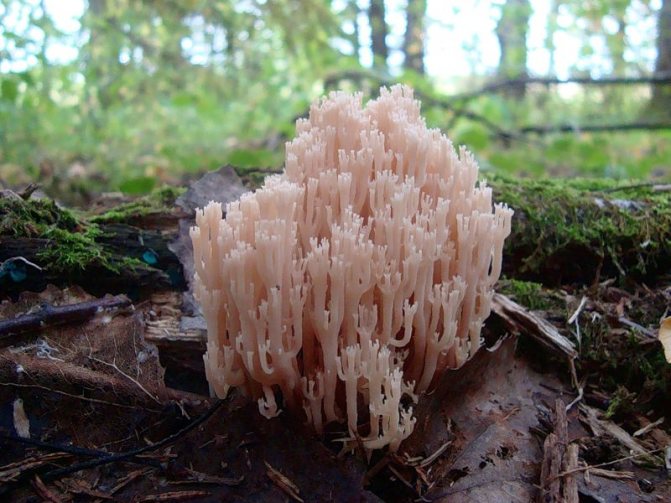

Reindeer horns belong to the fourth category of mushrooms.
For the second: potatoes with mushrooms
Favorite tubers will go both fried and mashed.For both side dishes, the antler mushroom, washed as diligently as possible, is boiled for no longer than five minutes in slightly gurgling water. If it boils strongly, just beats with a key, the "corals" will become lethargic and will creep apart. Strained "slingshots" are cut in an arbitrary way and fried with onions in butter. Then you can go in different ways:
- Almost until ready to fry the potatoes in another frying pan, add the almost ready-made reindeer horn mushroom to it and stew a little under the lid.
- The traditional mashed potatoes are made - with milk, with butter, airy. It is laid out on plates, and mushroom frying is laid out on top, brought to final readiness.
Both are amazingly delicious!
On the other: cartop with mushrooms
Loving bulbies go in a smeared viglyad, and in a viglyad puree. For garnishing, the “deer ryzhki” mushroom, yakomoga promity is steadily, boil not more than five quills in slightly gurgling water. It’s hard to boil, we just turn on, "coral" will become blasphemy and will start working. Vіtsіdzhenі "rogatik" flaunts a great rank and grease with cibulei at the top of the oil. You can go far along the road:
- As soon as you are ready to grease the potatoes in a frying pan, bring the ready-made mushroom "deer ryzhki" to it, and put out the gingerbread.
- To work with traditional mashed potatoes - with milk, with butter, povitryans. Vono to be laid out in tartlets, and from the top to wicker mushrooms with a smear, brought to the end of the day.
And those, and іnshe - pranks are delicious!
Rogat: medicinal properties and other facts
Medicinal properties: Polysaccharides isolated from mycelial culture stop the growth of sarcoma-180 and Ehrlich's carcinoma by 90%. The mushroom contains 5-hydroxytryptophan, a precursor of serotonin and melatonin.
Collection and procurement rules: Collect fresh fruit bodies that have not begun to dry out or brown. Alcohol infusions are used.
Interesting Facts. Despite the obvious resemblance to horns, this mushroom has nothing to do with them. It belongs to shivering fungi, its relatives are shivers, gelatinous pseudo-jelly, auricularia and other gelatinous heterobasidiomycetes.
Lighting and temperature
Like most succulents, Kalanchoe needs good lighting. Of course, you can put the plant in a shaded place, but then its stems will stretch, and flowering in general will be a big question.
When grown at home, the best windows for Kalanchoe are east and west. And in winter, they are completely southern. In summer, you need to be careful with southern windows. In the heat, with intense sunlight, the leaves of the Kalanchoe can acquire a reddish tint, but some growers even like such metamorphoses. So try it.
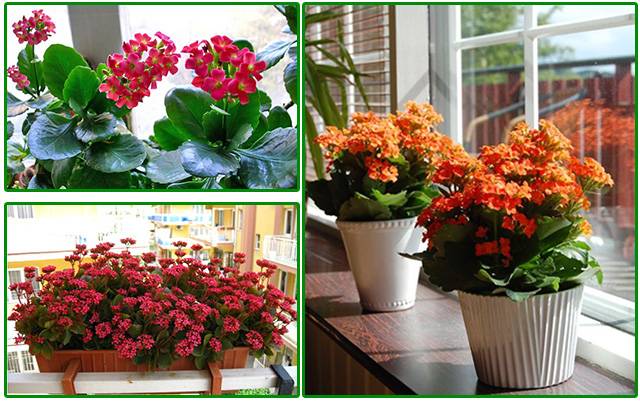

At home, Kalanchoe is grown in pots on windowsills or on the balcony - in balcony boxes
Important note: the establishment of flower buds in Kalanchoe occurs with a short daylight hours (lasting about 8-10 hours). But this “day” should be bright, ideally sunny. Then more flower buds will form, and the colors of the flowers will be more saturated.
Like many succulents, Kalanchoe grows best in moderately warm temperatures. In summer, the ideal mode is 23-25 ° C, in winter - 11-16 ° C. But quite bold variations in one direction or another from the theoretical ideal are also possible. In winter, nothing will happen to the Kalanchoe, and with short-term drops in temperature to 8 ° C, of course, provided that the plant is kept “semi-dry”. And in the summer, even temperatures above 30 will not harm him, if the earthen coma is not allowed to dry out.
Therefore, as soon as the air warms up to 10 ° C in spring, you can take the Kalanchoe in a pot to the balcony or yard. And keep the plant there until autumn, until, again, the temperature drops below 10 ° C.Some growers plant it in the open ground in the garden for the summer, and in the fall they dig it up and move it back to the pot.
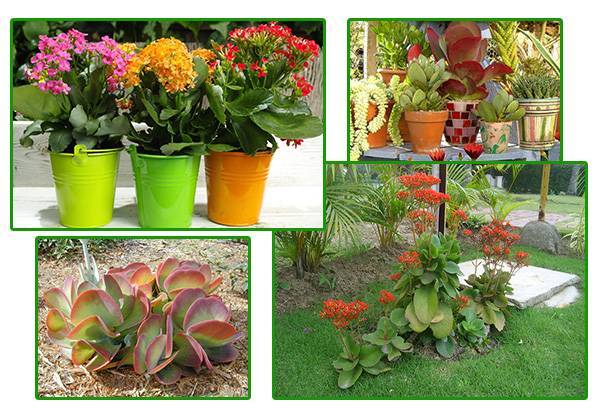

In summer, Kalanchoe can be planted in the garden - right into the open ground. Or take the pots of succulents out into the yard.
Beneficial features
The composition contains amino acids (methionine and tryptophan), as well as lipids, phytoagglutinin and sterol. It is often used in Chinese medicine to treat gastrointestinal disorders and improve lung function.
It also has an anti-tumor effect and strengthens the immune system. Reindeer horns are used in cosmetology to slow down the aging process.
Ramaria yellow contains useful amino acids methionine and tryptophan, lipids, phytoagglutinin and sterol. The latter is often used by Chinese physicians to heal problems with the gastrointestinal tract, as well as to improve lung function.
It is believed that the yellow horned horn has antitumor properties and strengthens the immune system. In addition, the antler mushroom is used in cosmetology to slow down the aging process, with the aging of the skin.
In folk medicine, infusions for the treatment of joints, medicinal decoctions to get rid of worms and parasites are made from the bear's paw.
Time and place of fruiting
The bear's foot prefers temperate climates. It settles on the soil in coniferous, deciduous and mixed forests. Grows singly or in small groups. Horned beetle can be found in the mountains of the Caucasus, Karelia, in the countries of Central Europe (Russia, Crimea, Belarus).
The time of fruitfulness is August - September. It is listed in the Red Book as the rarest species and is considered the highest mushroom.
Important! An older specimen of yellow ramaria begins to taste bitter, therefore experienced lovers of quiet hunting recommend collecting horns at a young age, that is, in early August-September.

